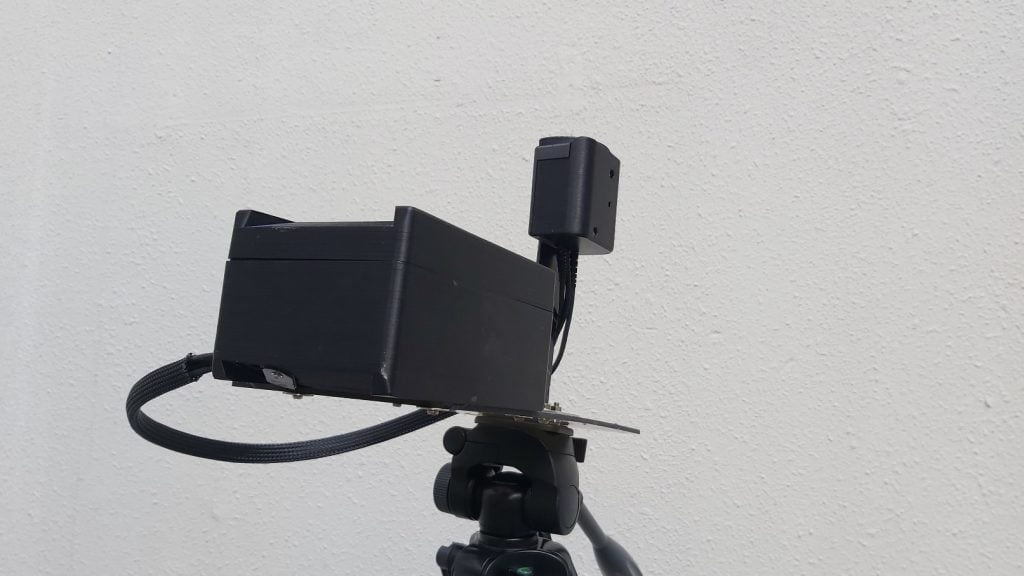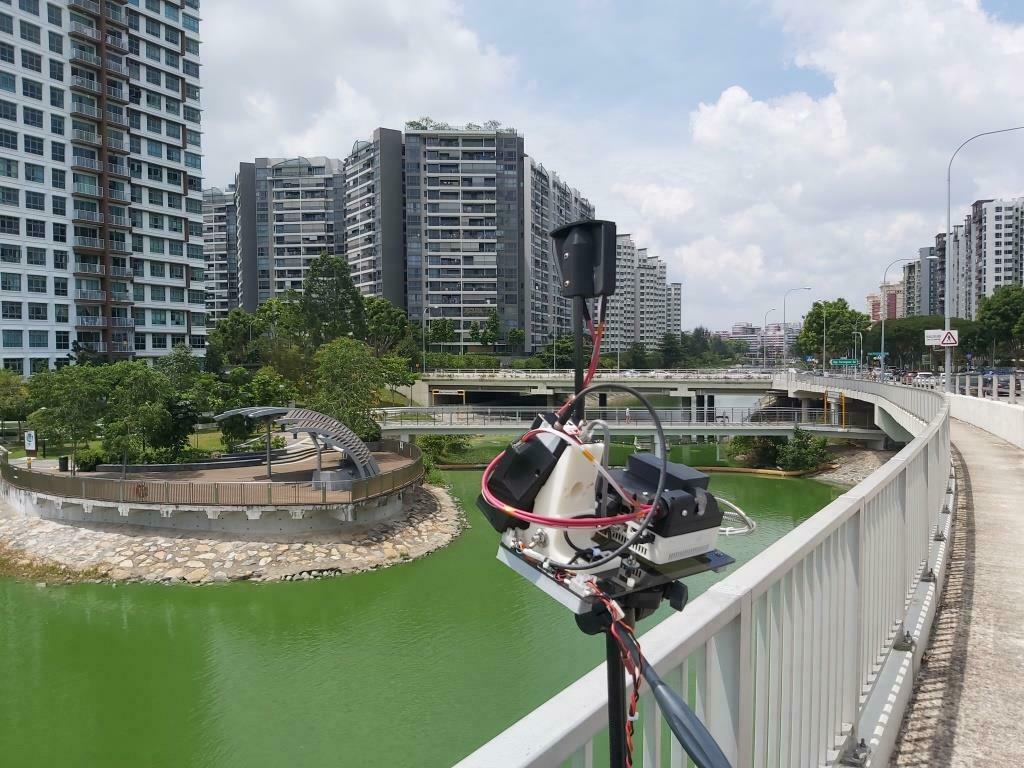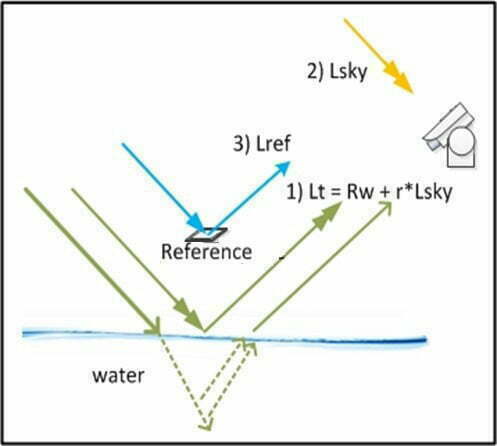Water quality parameters in water bodies are usually obtained using in-situ sensor probes placed in water bodies or by laboratory measurements of water samples collected on-site. These conventional methods are laborious, costly and have limited spatial coverage.
The following illustrates the existing water quality monitoring methods used, which have limitation and challenges such as below:
Remote sensing (non-contact) measurement has the advantage of low maintenance, and it avoids biofouling issues and regular calibration requirements compared to existing on-line water quality sensors. This technology relates to a contactless measurement method for water quality parameters and can be deployed on buildings’ roof-top overseeing reservoirs using unmanned multi-rotor drones. This technology was developed to measure water parameters such as Chlorophyll-a, water turbidity and CDOM (colored dissolved organic matter).
The principle and methods employed are like satellite imaging and the water body naturally illuminated by sunlight, which can be measured based on water reflectance.
Monitoring of water quality like algae concentration in water sources (lakes, rivers, reservoirs etc) is important for both the water treatment process and the interest for public health protection. With global climates changes and urban developments, the number of incidents of algae bloom has risen increasing the importance of having timely water quality information.
In this regard, traditionally water probes are used for real-time monitoring of water quality. However, these methods pose a challenge to on-site deployment and regular site maintenance carried out by the maintenance crew. Studies have shown that operational cost for on-site maintenance of water probes/sensors is a significant (if not major) part of the total cost of ownership of a real-time monitoring system.
To answer these challenges, our remote sensing water quality sensors enable contactless water quality monitoring (removing the effect of biofouling faced by all water probes) and new methods of deployment such as area mapping carried out by the drone.

Eagle.pt (point) is our base-model of contactless water quality sensor series. It provides users with instant water parameters (Chlorophyll-a, Turbidity and CDOM) with versatile deployment configurations without in contact with the water. The system can be mounted either from a Drone for “in-flight measurement” or from land structure for long-term deployment.
This Remote Sensing Water Quality (RSWQ) sensor system uses similar working principle as satellite imaging for remote detection of water parameters. Contactless measurement means no bio-fouling problems (that plague traditional in-water probes) and significantly lowering maintenance cost for its users.
Eagle.i (eye) is a customized extension from our base model with an additional Spectrum Imager. This provides the same robust contactless measurement technology with the added feature of a 2D (image) spatial measurement in a single snapshot.


As light propagates through water, it is partly absorbed and scattered by water molecules and the constituents suspended or dissolved in water. The intensity and spectral content of light reflected from water (measured above the water surface) carry information about the types and amount of the optically active constituents in water. The dominant constituents are the phytoplankton, suspended particulate matter and the coloured dissolved organic matter (CDOM). Our RSWQ systems measure the spectral radiance of light scattered by the water body. The optical properties (namely, the absorption and backscattering coefficients) can be derived from the detected radiance by appropriate modelling of the light/constituent interactions.
On-line water quality monitoring systems in the market today are mostly based on in-water multi-parameter probes, which are exposed to bio-fouling. These methods pose a challenge to site deployment and regular site maintenance carried out by trained crew. In-water probes need to be removed for regular cleaning and calibration to prevent measurement drifts and possible damages due to fouling. Studies have shown that operational cost for on-site maintenance of water probes/sensors is a significant (if not major) part of the total cost of ownership of a real-time monitoring system.
The RSWQ system avoids these bio-fouling issues as it does not have direct contact with the water bodies.
This allows the user with the following advantages:
1) low on-site maintenance and deployment requirements, thus lowering the total cost of operation.
2) Alternative to harsh high bio-fouling water conditions.
3) Novel contactless measurement opens up to new operational methods like deployment on structures/roof-tops for easy access without working near or in water bodies, and deployment on unmanned multi-rotor drones for measurements on-the-fly for spatial mapping / coverages.
Water quality parameters in water bodies are usually obtained using in-situ sensor probes placed in water bodies or by laboratory measurements of water samples collected on-site. These conventional methods are laborious, costly and have limited spatial coverage.
| RSWQ | Satellite | Water Probes | Grab sample | |
| Low manpower (maintenance and/or manual process) | Yes | Yes | No | No |
| Spatial overage options | Yes | Yes | No | No |
| Real-time data | Yes | No | Yes | No |
| Low cost | Yes | No | Yes | No |
Copyright © NexusBit Integral.
Website Managed by Exabytes (SG). All Rights Reserved.